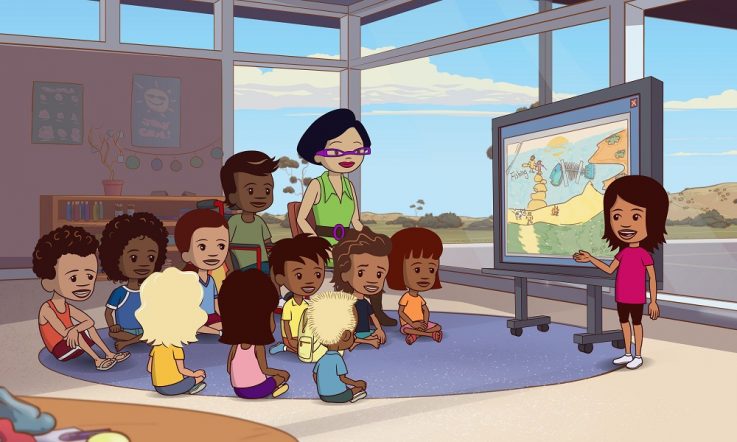An animated TV series designed to smooth the transition to school for Indigenous children is proving to be a valuable resource for social emotional learning for all at a school in South Australia.
Marion Primary School is 10 kilometres south of the Adelaide CBD and has a student enrolment of 200. More than 14 countries are represented in the children's cultural backgrounds and about 10 per cent of the students identify as being of Indigenous descent.
In 2017, one Grade 2 teacher at Marion Primary School was using the animated show Little J & Big Cuz. But after a staffroom discussion, the series – which follows the adventures of an all-Indigenous cast of characters as they navigate the unfamiliar world of school – was formally incorporated by four teachers into the curriculum for all children in the first three years of school.
It became a key element in the school's social emotional learning program. In addition, teachers found opportunities to use the 13 episodes in curriculum areas such as Literacy, Geography and Science.
A recent study found Little J & Big Cuz bolsters pride and identity in Indigenous children, and supports learners' emotional wellbeing and teacher improvement (Moyle, 2019). The award-winning series is accompanied by free resources for teachers.
So, why use Little J & Big Cuz at Marion Primary School? ‘We just thought it was a really good segue into a lot of social emotional topics,' Michelle Volaris, a junior primary teacher, explains. ‘They (the students) get to see other children their age experiencing issues or feelings that they are experiencing or feeling, and it gives them opportunities to see ways in which they can sort these problems out and go about that in different ways.
‘It is also a good segue into our school values. Our school values are courage, integrity and harmony and a lot of the episodes are based around those three values.'
Volaris' colleague Jo Byrne concurs that Little J & Big Cuz provides a platform for discussion and group work around social emotional learning.
When she recently asked her class what they took away from the series, she found the school values shining through in the students' response.
‘They were able to highlight from each of the episodes that they focussed on helping each other, team work, friendship and never giving up,' Byrne says.
`I had pretty much the same conversation with my students,” Volaris adds, ‘And they said they liked that the children were kind and they were always solving problems that could happen to us and they use our school values, and some are very funny.'
While the series has supported the social emotional curriculum for all learners, it has also been the springboard for some pivotal classroom moments for individual students.
‘We are quite diverse here at Marion Primary School, so we thought it was a good way to engage a lot of the students who generally find it difficult to engage in Literacy,' Volaris says.
‘We had one specific student; an Aboriginal student who found it very difficult to engage in pretty much all aspects of the curriculum. The Little J & Big Cuz episode allowed him to engage, to have a link with his culture. We actually got him to provide feedback and he was answering questions.
‘So for a short period of time that it was on we would converse about it; he was so engaged and really excited to be there and talking. That was a really positive thing for us to see.'
At this school, the children's favourite episodes are Hopalong and Lucky Undies. Byrne says there is no doubt the title `Lucky Undies' appeals to the children – but there is more to it.
She says: 'The moral of that story is to believe in yourself and give it a go, and that really connected with them.'
References
Moyle, K. (2019). Final report and case studies – Little J & Big Cuz: A school readiness initiative. Camberwell, Australia: Australian Council for Educational Research.
Watch Little J & Big Cuz now on NITV via SBS On Demand.
Visit the Little J & Big Cuz website to view the full suite of resources for each episode in the series.
How are you using Little J & Big Cuz in the classroom? Get in touch with the Teacher team and let us know.



